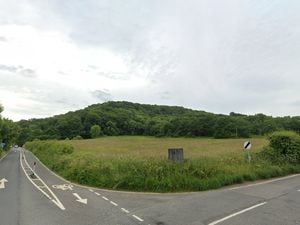Earliest known man-made iron object in human history features in new Ironbridge Gorge exhibit
A new exhibition on the history of iron in Coalbrookdale features real meteorites, a sword found in the Severn and the earliest known man-made iron object in human history.
Watch more of our videos on Shots!
and live on Freeview channel 276
A temporary exhibition at The Coalbrookdale Gallery in the Ironbridge Gorge is exploring the science of iron.
Running until December 1, ‘From Stars to Cells: The Life of Iron’, is taking visitors on a journey from iron’s origins in space billions of years ago through to its use by humankind and in the Ironbridge Gorge.
The exhibition begins by exploring the formation of iron atoms in stars and supernovas, wowing visitors with colourful images of distant stars and spectacular supernovas, taken by NASA and the James Webb Space Telescope.

Guests will also have the chance to see up close real meteorites formed in space 4.5 billion years ago, alongside information about the development of astronomy in the Ironbridge Gorge, accompanied by an 18th century telescope from the museum’s collections.
The exhibition continues by exploring the formation of Earth over billions of years and iron’s vital role in life on our planet and in our bodies. It shows how iron first formed in the local area more than 300 million years ago, and how humankind has extracted and mined iron ore for its use.
The star of the show, however, is a bead from ancient Egypt dating from approximately 3200 BCE. On loan from the Petrie Museum of Egyptian and Sudanese Archaeology at University College London, the bead is the earliest known man-made iron object in human history, and this will be the first time it has ever been exhibited outside London.

Formed from a piece of iron meteorite, it was hammered and heated to make a bead for a necklace, a process that required the invention of blacksmithing. On this necklace – the other parts of which will also be on display – the iron bead would have been considered the most precious, metals like gold being much easier to shape.
The exhibition also features a selection of objects on loan from Shropshire Museums, including Iron Age coins from the Claverley Hoard, a gold decorative torc necklace excavated in Telford, and a bronze sword found in the River Severn.
Lauren Collier, Ironbridge Gorge Museum Trust head of interpretation and curator of the exhibition, said they hope the exhibit will "reinspire people’s wonder at iron".
"Nowadays iron is a commonplace material that we associate with useful but overlooked objects like drain covers, tools and street furniture," she said.
"But in fact, iron is an amazing material: it was formed light years away in space; took hundreds of millions of years to form on Earth; required thousands more years of human experimentation for us to learn how to use it; and when we finally did, it transformed our lives.
“The story of iron is particularly important to the local area, where the pioneering Darby family revolutionised our lives with their innovations in the iron industry, a symbol of which is the Iron Bridge.
"Through this exhibition, we hope to inspire renewed excitement, wonder and appreciation of what they achieved. We hope visitors will come to see iron in a whole new way.”





